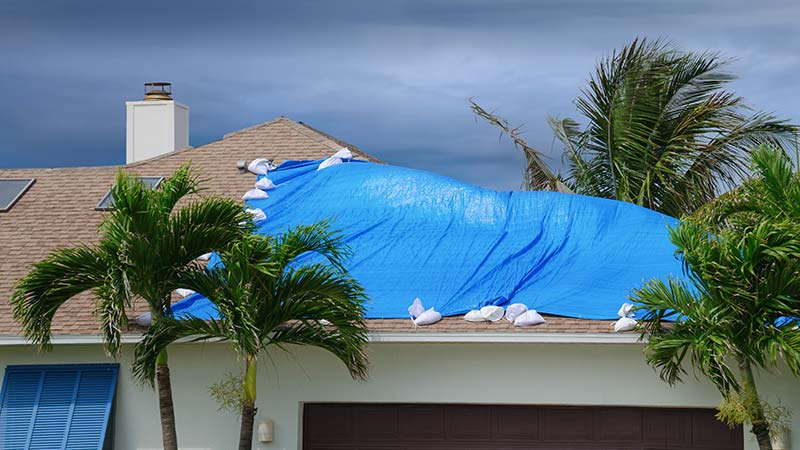Storm Season & Roof Health

As we move into spring, we once again enter the busy storm season. According to NOAA’s Storm Prediction Center, 83% of severe storms occurred between April and August last year. In April alone, there were over 800 hail events and more than 2,200 severe wind events. Things have kicked off early in 2021. The latest figures from March show a 28% increase in tornado, hail and severe wind events, from the same time last year.1
Severe storms can cause many issues with roofs. There are steps that insureds can take to weatherproof their roofs. First, it’s important to ensure that the roof is in good condition. Schedule routine inspections of your roof. Strong winds and hail can put a lot of pressure on roof materials. The longer you delay having minor problems repaired, the more repairs are likely to cost you down the road. Resolve leaks immediately. Look for dents, divots, cracks or damage to roofing materials. Any breach in a roof can become a point of entry for water during a storm. Water damage can generate other issues, like mold or problems with pests and insects drawn to the moisture.
The material on the roof matters in a storm. Built-Up Roofing (BUR) systems have two layers, a granule base layer, like gravel, and a smooth finish, typically asphalt. The gravel layer can handle hail, but can be negatively impacted by wind. The smooth layer is less susceptible to wind damage, but more vulnerable to hail. TPO roofs are also popular on commercial buildings because thermoplastic roofing is made to flex and is more resilient. EPDM rubber and metal roofing typically do well in storms, but both can sustain damage that becomes a long-term issue if not addressed. After a big storm, insureds should inspect their roof for any damage and address issues as soon as possible.
Damage to a commercial roof often extends beyond the roof itself. HVAC equipment, solar panels, skylights and other rooftop equipment can be damaged in a storm. Businessowners should be sure to reseal penetrations made by ventilation equipment, electrical work or roof-mounted HVAC units. This equipment can also become detached in a storm. Make sure the equipment is secured if you know a storm is coming.
Gutters and downspouts should be inspected as well to ensure proper drainage. Often times, roof damage during a storm comes from the accumulation of water on the roof.
We’re here to help you mitigate these risks. Tap into our expertise by contacting our Loss Control experts or your Property & Inland Marine representative. You may also find resources available at our Loss Control Safety Hub.
Resources:- NOAA’s National Weather Service, Storm Prediction Center – Annual Severe Weather Report Summary